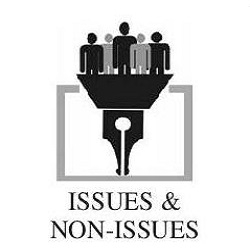Whither Sporting Culture - II
| Date :07-Sep-2024 |

By Vijay Phanshikar :
The larger Indian
society needs to do a lot and a lot more
systematically -- over stretches of time
spanning decades so that young people from at least a couple of
generations are covered with certain
impassioned idea about sports as a way of life. The national
programme of ‘Khelo India’ appears to be in a similar genre, one must say. Yet, even on that count, the nation’s overall performance has a lot of be desired.
l Paris, September 4 (PTI): World champion Sachin Sarjerao Khilari clinched a Silver in Men’s Shot-Out F46 event with an Asian record distance of 16.32 meters as the country’s track-and-field athletes continued their unprecedented medal-winning run in the Paralympic Games here on Wednesday. Khilaris’ Silver is the 11th Medal from the para-athletes in the ongoing Games and takes India’s overall Medal tally to 21, including three Golds.
l Paris, September 5 (PTI): Harvinder Singh became the first Indian archer to strike Gold at the Paralympics before club thrower Dharambir also secured a top finish with a record-shattering throw as the country’s athletes continued to surpass expectations on yet another rewarding day at the quadrennial showpiece here. Their performance took India’s Medal haul to 24 a=with the nation currently placed 13th in the overall standings with 5 Golds, 9 Silvers and 10 Bronzes.
It is India’s best ever performance at the event and will only get better with three more days of the competition left.
BEYOND doubt, the Indian performance at the Paris Paralympic Games brings a great cheer to every heart. Though there still other nations with better performances in the same event, the Indian showing in paralympics and other world tournaments is good and worthy of legitimate pride. True, India’s showing in regular Olympics and other competitions, too, has improved a lot over the past some years -- grabbing national headlines, all right. Thus, hope has begun dancing in Indian hearts about overall sports at the international level.
Yet, a lurking realisation also keeps its head up that there is still a very long way to go to make the country a sporting power even at the regional level. Another part of this realisation that the country and its society will have to do a lot of systematic work to rise higher on the sporting ladder. Naturally, the hidden part of that realisation is that the larger Indian society will have to start preparing for a quantum jump in sports right from the time a child is 2 or 3 years of age -- through a well- coordinated educational programme in which sports occupy a pride of place.
This part of the realisation has a social background as well -- which gets illustrated from a ‘reel’ or ‘short’ that is viral on social media, showing a young son standing at the door of his mother’s room and asking for money to buy a badminton racquet since he wished to play a competitive game. His mother discards the idea saying that the family has no money to spend on the boy’s badminton. A few minutes later, the boy is the room’s door again, this time asking permission to start preparing for UPSC examination (which would entail him joining a tuition class). With no word said, the mother hurls at the boy wads of 500-rupee notes to pay for the UPSC tuitions.
But then, there is a famous anecdote from the life of the Duke of Wellington (who defeated Napoleon the Great at a grim battle at Waterloo). Somebody asked the Duke where he learned the trick of defeating Napoleon. The Duke said, in effect, ‘The battle of Waterloo was fought on the playfield of Eton (the school he went to in England).
There should be nothing more to say philosophically after this !
These two little stories point to certain way of thinking, certain cultural dimension involving sports. It is on this count that the larger Indian society needs to do a lot and a lot more systematically -- over stretches of time spanning decades so that young people from at least a couple of generations are covered with certain impassioned idea about sports as a way of life.
The national programme of ‘Khelo India’ appears to be in a similar genre, one must say. Yet, even on that count, the nation’s overall performance has a lot of be desired -- to reach some sensible point of progress.
Of course, at this point, it is essential to make a distinction between playing for medals and playing for playing’s sake or for the sake of better health or better quality of healthy entertainment and recreation. But anybody can understand easily that when more and more people take to sports as part of a national culture, then the talent pool of sporting geniuses also expands -- giving the nation many more numbers of aspiring sportspersons from which to make the choice for medal hunt at world level.
Unfortunately, the larger Indian society does not share a similar idea or enthusiasm about sports as a integral part of the cultural core of the country. In astounding numbers of Indian families, sports are still considered a waste of precious time during which the youngsters must study and attain good academic grades and go into career-branches that and earn good money.
When a country’s academic thought is restricted to such a narrow pathway, then there is a lot for the society to think about -- which it cannot afford to ignore.
(To be continued)